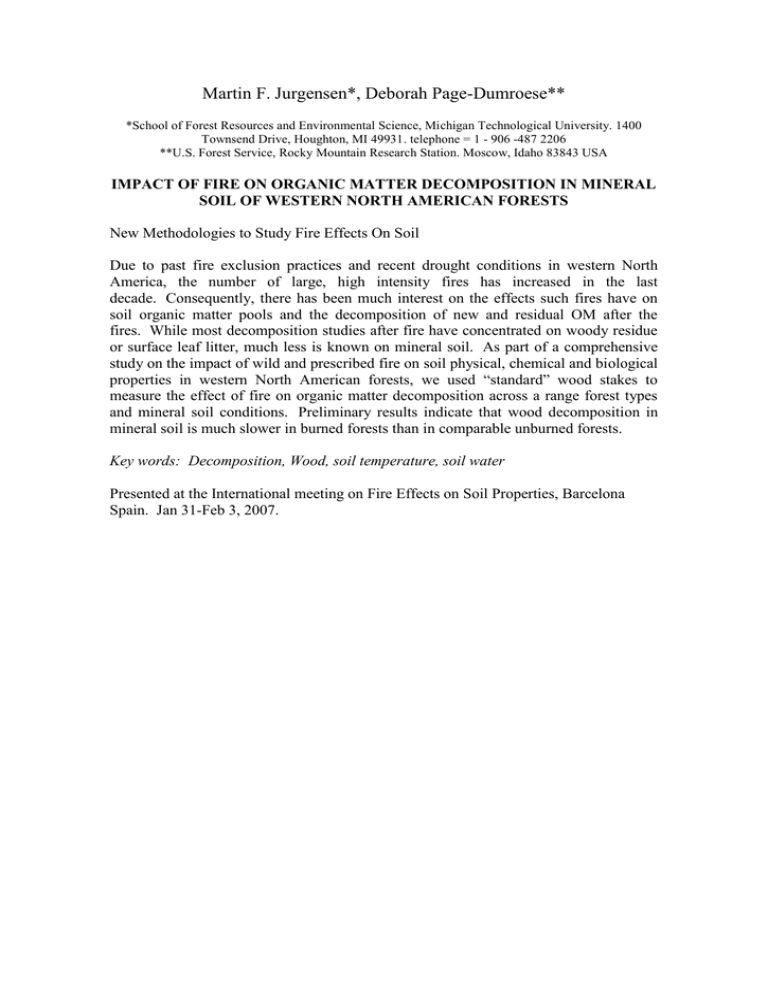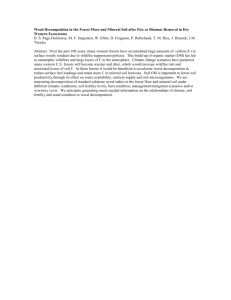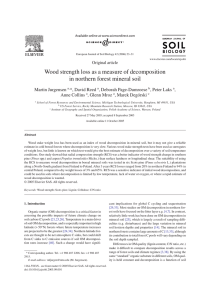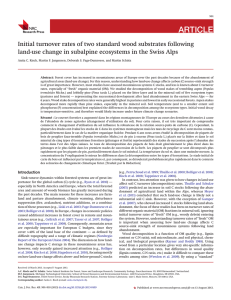Martin F. Jurgensen*, Deborah Page-Dumroese**
advertisement

Martin F. Jurgensen*, Deborah Page-Dumroese** *School of Forest Resources and Environmental Science, Michigan Technological University. 1400 Townsend Drive, Houghton, MI 49931. telephone = 1 - 906 -487 2206 **U.S. Forest Service, Rocky Mountain Research Station. Moscow, Idaho 83843 USA IMPACT OF FIRE ON ORGANIC MATTER DECOMPOSITION IN MINERAL SOIL OF WESTERN NORTH AMERICAN FORESTS New Methodologies to Study Fire Effects On Soil Due to past fire exclusion practices and recent drought conditions in western North America, the number of large, high intensity fires has increased in the last decade. Consequently, there has been much interest on the effects such fires have on soil organic matter pools and the decomposition of new and residual OM after the fires. While most decomposition studies after fire have concentrated on woody residue or surface leaf litter, much less is known on mineral soil. As part of a comprehensive study on the impact of wild and prescribed fire on soil physical, chemical and biological properties in western North American forests, we used “standard” wood stakes to measure the effect of fire on organic matter decomposition across a range forest types and mineral soil conditions. Preliminary results indicate that wood decomposition in mineral soil is much slower in burned forests than in comparable unburned forests. Key words: Decomposition, Wood, soil temperature, soil water Presented at the International meeting on Fire Effects on Soil Properties, Barcelona Spain. Jan 31-Feb 3, 2007.






